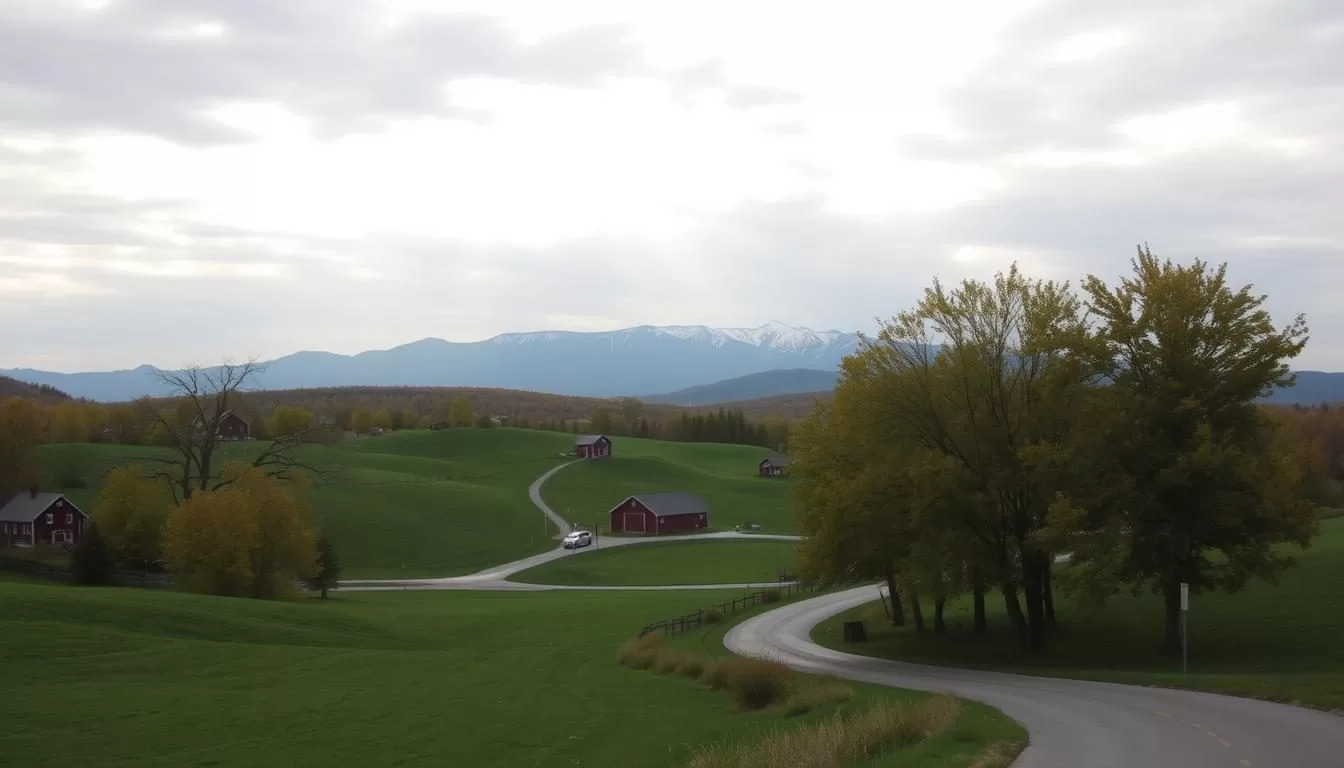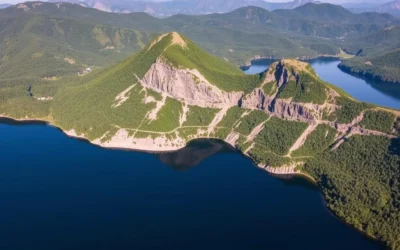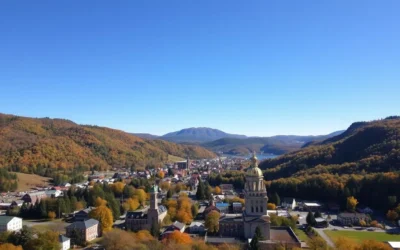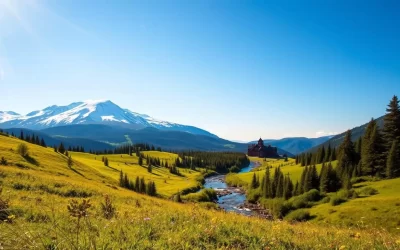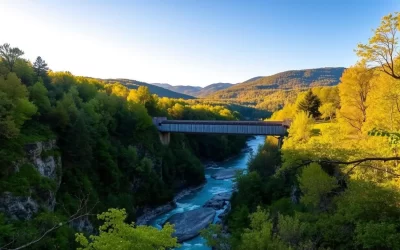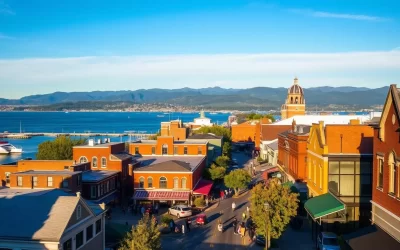You’re planning a trip to Vermont and want to make the most of your visit. The Green Mountain State comes alive in different seasons, offering a range of experiences from skiing to maple sugaring, and from outdoor adventures to witnessing spectacular foliage.
Vermont experiences four distinct seasons, each with its unique charm. To help you navigate the state’s varied weather patterns and choose the best time for your visit, this comprehensive guide will explore temperature variations, precipitation patterns, and seasonal activities.
Whether you’re looking for budget-friendly travel options or specific outdoor activities, this guide will ensure you’re well-prepared for your trip to Vermont.
Understanding Vermont’s Seasonal Weather Patterns
To make the most of your trip to Vermont, it’s essential to understand the state’s seasonal weather patterns. Vermont experiences a continental climate with significant variations in temperature and precipitation throughout the year.
Temperature Variations Throughout the Year
Vermont’s temperature varies significantly across seasons. Winter months (December to February) are cold, with temperatures often below freezing. Spring (March to May) brings mild temperatures, gradually warming up. Summer (June to August) is warm, with average highs in the 70s and 80s Fahrenheit. Fall (September to November) is cool, with temperatures dropping as the season progresses.
Precipitation Patterns and What to Expect
Precipitation in Vermont is fairly evenly distributed throughout the year. Summer months tend to be the wettest, with July typically seeing about 4.8 inches of precipitation. Winter brings significant snowfall, especially in the mountains, with totals ranging from 60-100 inches in valleys to over 200 inches at higher elevations. Nor’easters can bring heavy snow and wind during winter. Spring often results in a mix of rain and snow, contributing to the “mud season.” 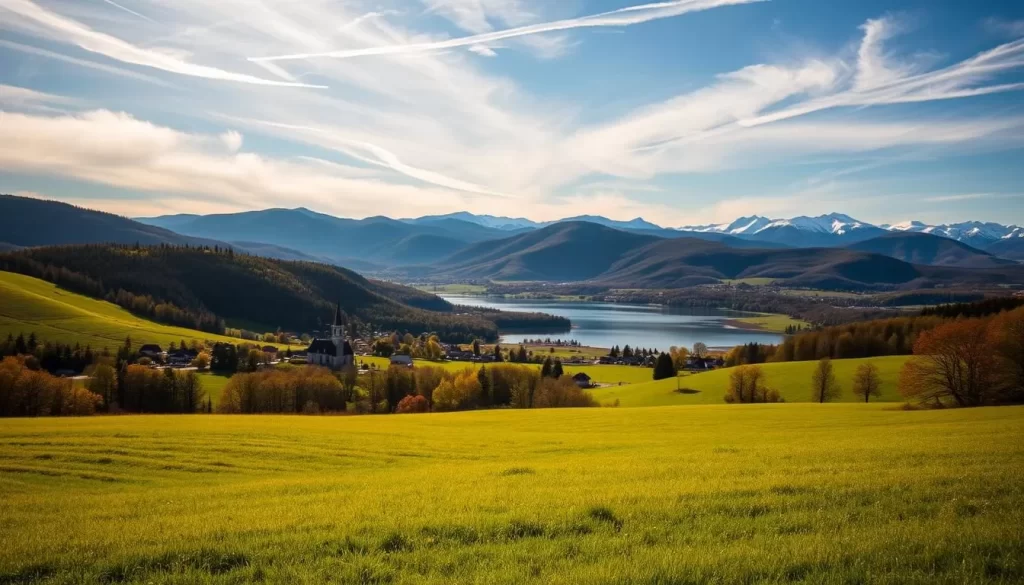
| Season | Precipitation Type | Average Amount |
|---|---|---|
| Summer | Rain | 4.8 inches (July) |
| Winter | Snow | 60-100 inches (valleys), 200+ inches (mountains) |
| Spring | Rain and Snow | Varies |
| Fall | Rain | Varies |
Winter in Vermont: A Snowy Paradise (December-March)
Vermont’s winter landscape transforms into a snowy paradise from December to March, offering a serene getaway for those who enjoy cold-weather activities. During this period, the state’s terrain is ideal for a range of winter sports and activities.
December: Holiday Magic and Early Skiing
December marks the beginning of winter in Vermont, with the holiday season bringing a touch of magic to the state. Early skiing is available at many resorts, with some snowmaking to ensure good conditions. You can enjoy the festive atmosphere while engaging in various winter activities.
January and February: Peak Snow Season
January and February are the peak months for snow in Vermont, with most ski resorts experiencing their best conditions. The snow season is in full swing, making it an ideal time for skiing and other snow sports. The cold weather ensures a robust snow base, attracting many to the slopes.
March: Late Winter Sports and Maple Season Begins
March represents a transition in Vermont, with winter sports still in full swing while maple sugaring season begins. Many consider March the best month for skiing, with a substantial snow base, longer daylight hours, and more moderate temperatures. As temperatures fluctuate between freezing nights and warmer days, the sap begins to flow in the maple trees, marking the start of the maple syrup production process.
| Month | Activity | Weather |
|---|---|---|
| December | Early Skiing, Holiday Events | Cold, Some Snowmaking |
| January & February | Peak Skiing, Snow Sports | Cold, Robust Snow Base |
| March | Late Skiing, Maple Sugaring | Fluctuating Temps, Sap Flow |
Spring in Vermont: Mud Season and Maple Syrup (March-May)
Vermont’s spring season, spanning from March to May, offers a unique blend of experiences. As the state transitions from the cold winter months, the landscape and activities evolve, catering to various interests.
The Famous “Mud Season” Explained
Mud season, a period of thawing and melting snow, typically occurs in March and early April. During this time, some roads and trails may become impassable due to the muddy conditions. However, it’s also a period when the maple syrup production begins, as the thawing temperatures create the perfect conditions for sap collection.
Maple Sugaring Season: When and Where to Experience It
Maple sugaring season is a highlight of Vermont’s spring. The season usually starts in late March and continues through early April. Visitors can experience the sugaring process at one of the many maple farms throughout the state, learning about the traditional methods and tasting the fresh syrup.
Spring Outdoor Activities and Wildlife
As spring progresses, outdoor activities become more accessible. Hiking trails dry out, and the rivers swell with spring runoff, making it an excellent time for fly fishing. The season also brings an array of wildlife viewing opportunities, including migratory birds and emerging animals like moose and deer. You can enjoy these things to do in Vermont during spring.
Summer in Vermont: Outdoor Adventures (June-August)
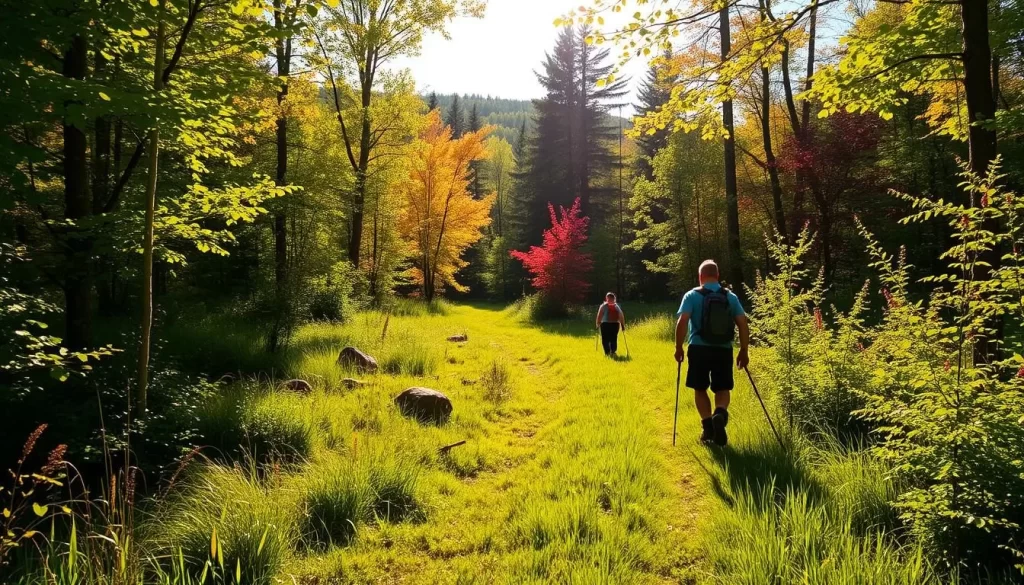
With the arrival of summer, Vermont becomes a haven for outdoor enthusiasts. The state’s natural beauty is on full display, with lush green landscapes and warm weather that invites exploration.
June: Early Summer Festivals and Hiking
June marks the beginning of summer in Vermont, with early summer festivals and hiking trails that are perfect for outdoor enthusiasts. The weather is mild, making it an ideal time to hit the trails before the peak summer heat.
July and August: Peak Summer Activities
July and August are the peak months for summer activities in Vermont. The warm weather and long days make it perfect for outdoor adventures like hiking, biking, and water sports. Expect temperatures to range from 70-85°F during the day, with cooler weather in the mountains and at night.
Summer Weather Considerations and Packing Tips
When planning your summer trip to Vermont, consider the weather and elevations. Although the days can be warm, with temperatures occasionally reaching the 90s, the temperature can drop significantly at night. Here are some packing tips:
- Summer temperatures in Vermont typically range from 70-85°F during the day, with cooler temperatures in the mountains and at night.
- Despite being a northern state, Vermont can experience occasional heat waves with temperatures climbing into the 90s.
- Afternoon thunderstorms are common in summer, so packing rain gear is advisable even during this drier season.
- The temperature difference between day and night can be significant, so layers are recommended even in summer.
- Higher elevations remain cooler, so if you’re planning mountain hikes or activities, pack accordingly with extra layers and sun protection.
Fall in Vermont: Best Months for a Weather-Savvy Trip (September-November)
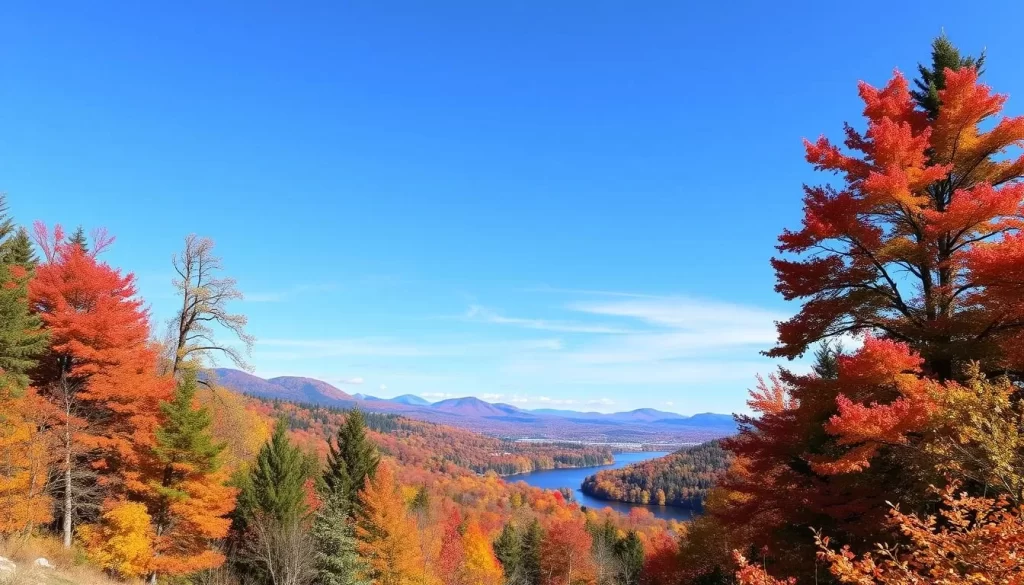
As the summer fades, Vermont transforms into a kaleidoscope of colors, making fall a spectacular time to visit. This season is characterized by the changing leaves, creating a picturesque landscape across New England.
September: Early Fall Colors and Harvest Season
September marks the beginning of fall in Vermont, with early signs of color change and the start of the harvest season. Visitors can enjoy the initial bursts of color, particularly in the higher elevations, and participate in harvest festivals.
October: Peak Foliage and Fall Festivals
October is the peak month for fall foliage in Vermont, with the state’s forests displaying a vibrant array of colors. It’s an ideal time for hiking, leaf peeping, and attending fall festivals that celebrate the season.
November: Late Fall and “Stick Season”
By November, the peak foliage has passed, but the state enters a quieter period known as “stick season.” While the bright colors have faded, shades of rusty orange and yellow still linger. It’s a good time to find lower hotel prices, and there’s even a possibility of an early snowfall, adding a serene beauty to the landscape.
Budget-Friendly Times to Visit Vermont
Vermont is a destination that can be enjoyed on a budget if you know when to go. The key to saving money lies in understanding the state’s seasonal fluctuations and planning your trip accordingly.
Off-Season Travel Benefits
Traveling during the off-season can significantly reduce your expenses. During this time, many in Vermont offer discounts on accommodations and activities. You can enjoy the state‘s natural beauty without the crowds, making for a more relaxed experience.
- Lower accommodation rates
- Discounts on activities and attractions
- Fewer tourists, making for a more peaceful experience
Weekday vs. Weekend Travel Costs
Another way to save money is by visiting during the week instead of on weekends. The data clearly shows that visiting Monday through Friday can save you even more money on your trip to Vermont.
| Day | Accommodation Cost | Lift Ticket Prices |
|---|---|---|
| Weekend | Higher (25-50% more) | Higher |
| Weekday | Lower | Lower (midweek specials) |
By choosing to travel during the off-season and on weekdays, you can enjoy things to do in Vermont while keeping your expenses in check. This strategic planning allows you to have a fulfilling experience at the right time.
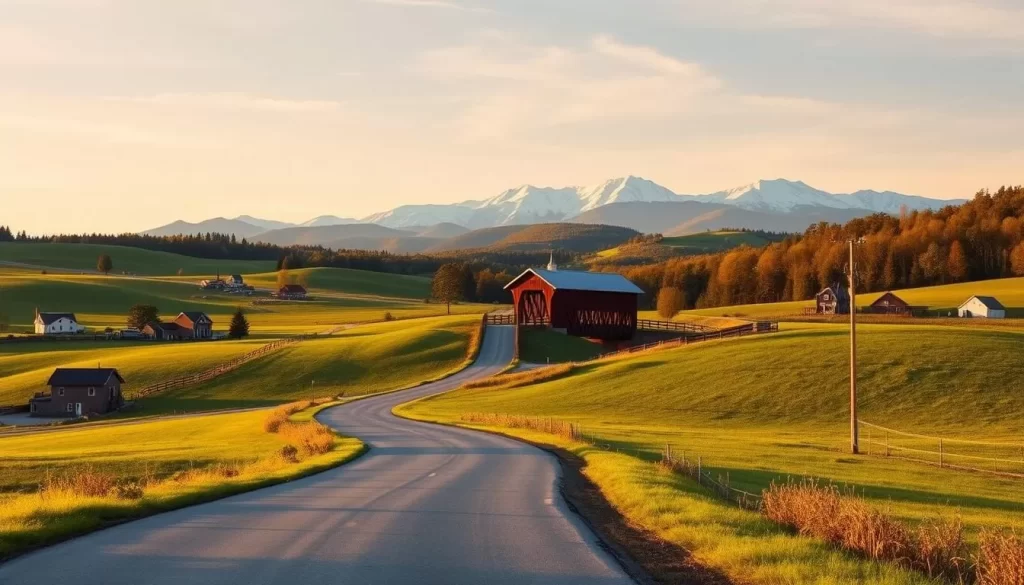
Planning Your Visit Based on Special Interests
The Green Mountain State caters to various interests, from skiing to hiking and water activities. Whether you’re an outdoor enthusiast or looking for a relaxing getaway, Vermont has something to offer.
Best Times for Skiing and Winter Sports
If you’re a fan of skiing and winter sports, the best time to visit Vermont is from December to March. January and February are peak months for snow sports, with resorts like Killington and Stowe offering world-class skiing.
Optimal Months for Hiking and Outdoor Activities
For hikers and those who enjoy outdoor activities, June is an excellent time to visit, with lush surroundings and manageable crowds. July and August are also great, with warm weather ideal for hiking and exploring Vermont’s trails.
When to Visit for Fishing, Camping, and Water Activities
Anglers can enjoy fishing in Vermont’s rivers, lakes, and streams from mid-April to late October. The state’s lakes and streams are stocked with trout in April, making spring a prime time for fishing. For camping, summer is the best time, with most state-run campgrounds opening on Memorial Day weekend. July and August offer warm water temperatures, perfect for swimming and water sports on Lake Champlain and other lakes.
| Activity | Best Time to Visit |
|---|---|
| Skiing and Winter Sports | December to March |
| Hiking and Outdoor Activities | June to August |
| Fishing | Mid-April to late October |
| Camping | Memorial Day weekend to Indigenous Peoples’ Day |
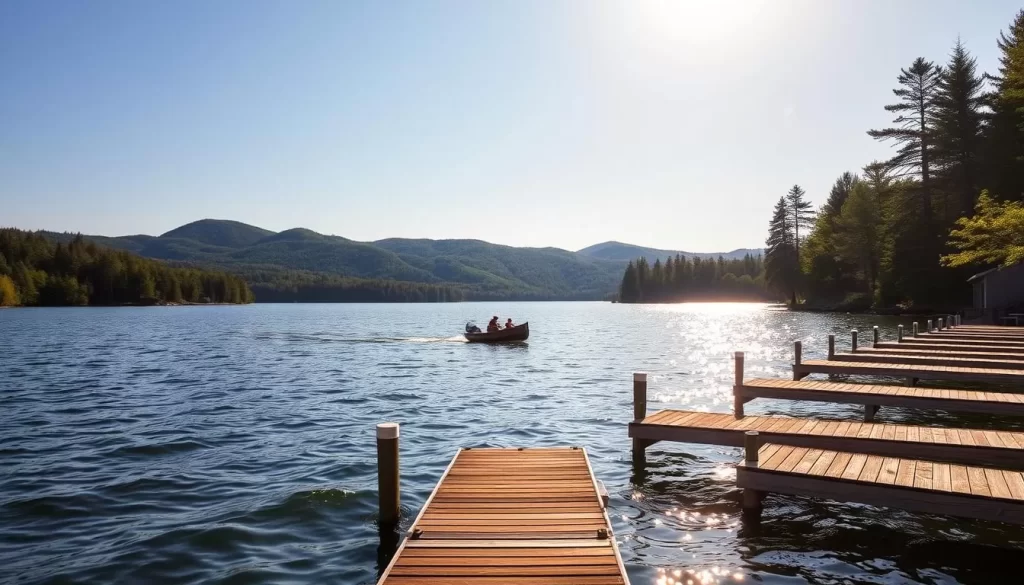
Month-by-Month Weather Guide for Vermont
To make the most of your visit, it’s essential to know what the weather is like in Vermont each month. Vermont’s climate is characterized by significant seasonal variations, making it a fascinating destination throughout the year.
Average Temperatures and Precipitation
Vermont’s temperatures vary greatly from month to month. By May, the average high temperature in Burlington reaches 68 degrees F, making it an ideal time to enjoy outdoor activities. July is the hottest month, with average highs of 81 degrees F. Understanding the precipitation patterns is also crucial; Vermont experiences a fair amount of rainfall throughout the year, with some months being wetter than others. You should be prepared for significant precipitation during certain times of the year.
In the warmer months, you can enjoy Vermont’s lush landscapes, while the colder months offer a serene winter wonderland. The average temperature and precipitation data can help you plan your trip according to your preferences.
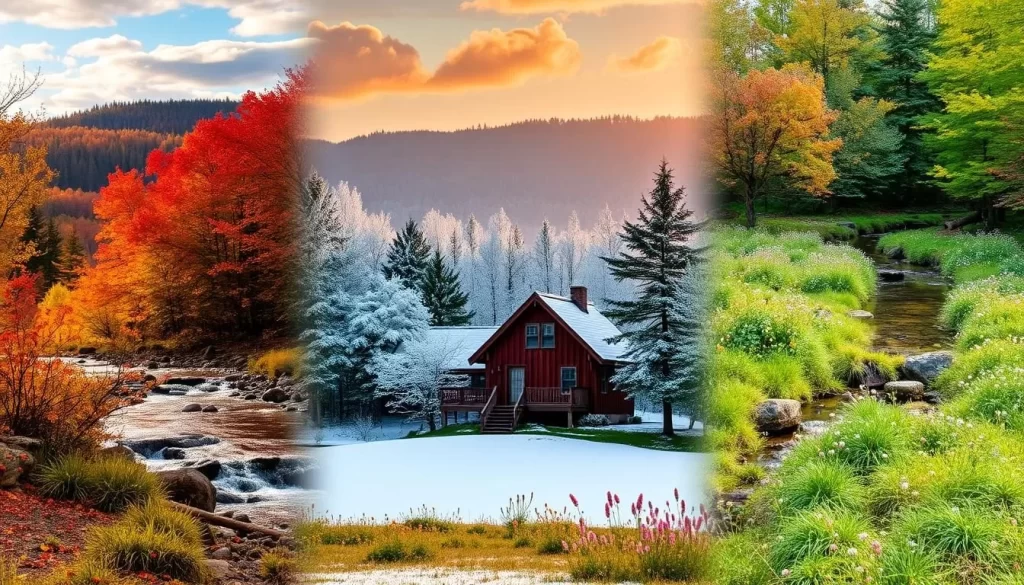
Daylight Hours Throughout the Year
Vermont experiences significant seasonal variation in daylight hours due to its northern latitude. The summer solstice around June 21 provides nearly 15.5 hours of daylight, with the sun rising before 5:00 AM and setting after 8:30 PM. Conversely, the winter solstice around December 21 has just 9 hours of daylight, with the sun rising after 7:00 AM and setting before 4:30 PM. This variation affects the timing for outdoor activities and photography, making it essential to plan your day accordingly.
Conclusion: Making the Most of Your Vermont Visit Any Time of Year
With its changing landscapes and seasonal activities, Vermont is a place where you can find a new adventure, no matter when you visit. The best time to visit Vermont ultimately depends on your interests, whether it’s skiing in February, tasting fresh maple syrup in March, hiking through summer greenery, or witnessing the spectacular fall foliage.
Vermont’s small towns, farm-to-table cuisine, and craft beverages provide year-round enjoyment. Consider visiting during shoulder seasons or mid-week for the best combination of good weather, available activities, and value. Don’t forget to pack layers, proper footwear (including waterproof boots for mud season), and rain gear.
The above is subject to change.
Check back often to TRAVEL.COM for the latest travel tips and deals.
Here are some Tours & Sightseeing suggestions that might pique your interests!
